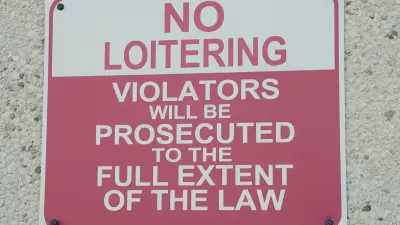Unlike most U.S. communities, Milwaukee County has managed to make significant progress toward assisting unhoused residents through a Housing First approach.

For the last decade, Milwaukee County has been bucking a national trend, effectively reducing the number of homeless residents and assisting people with supportive services.
In a piece for Governing, Carl Smith explains how the county’s Housing First approach helped it reduce unsheltered homelessness by 92 percent in the program’s first five years. “By the 2021 HUD count, the county had the nation’s lowest per-capita unsheltered homeless population. Savings to behavioral health and criminal justice systems are also tracked; to date Milwaukee County's Housing First program has saved taxpayers more than $30 million,” Smith adds.
When housing became harder to find in 2023, the city hired a landlord engagement coordinator to incentivize property owners and identify vacancies. Assistance programs also depend heavily on local collaboration. For example, the Milwaukee Downtown business improvement district (BID) funds a homeless outreach coordinator position and two public service ambassadors.
FULL STORY: Year After Year, Milwaukee Manages to Reduce Homelessness

Alabama: Trump Terminates Settlements for Black Communities Harmed By Raw Sewage
Trump deemed the landmark civil rights agreement “illegal DEI and environmental justice policy.”

Planetizen Federal Action Tracker
A weekly monitor of how Trump’s orders and actions are impacting planners and planning in America.

The 120 Year Old Tiny Home Villages That Sheltered San Francisco’s Earthquake Refugees
More than a century ago, San Francisco mobilized to house thousands of residents displaced by the 1906 earthquake. Could their strategy offer a model for the present?

Opinion: California’s SB 79 Would Improve Housing Affordability and Transit Access
A proposed bill would legalize transit-oriented development statewide.

Record Temperatures Prompt Push for Environmental Justice Bills
Nevada legislators are proposing laws that would mandate heat mitigation measures to protect residents from the impacts of extreme heat.

Downtown Pittsburgh Set to Gain 1,300 New Housing Units
Pittsburgh’s office buildings, many of which date back to the early 20th century, are prime candidates for conversion to housing.
Urban Design for Planners 1: Software Tools
This six-course series explores essential urban design concepts using open source software and equips planners with the tools they need to participate fully in the urban design process.
Planning for Universal Design
Learn the tools for implementing Universal Design in planning regulations.
Clanton & Associates, Inc.
Jessamine County Fiscal Court
Institute for Housing and Urban Development Studies (IHS)
City of Grandview
Harvard GSD Executive Education
Toledo-Lucas County Plan Commissions
Salt Lake City
NYU Wagner Graduate School of Public Service





























